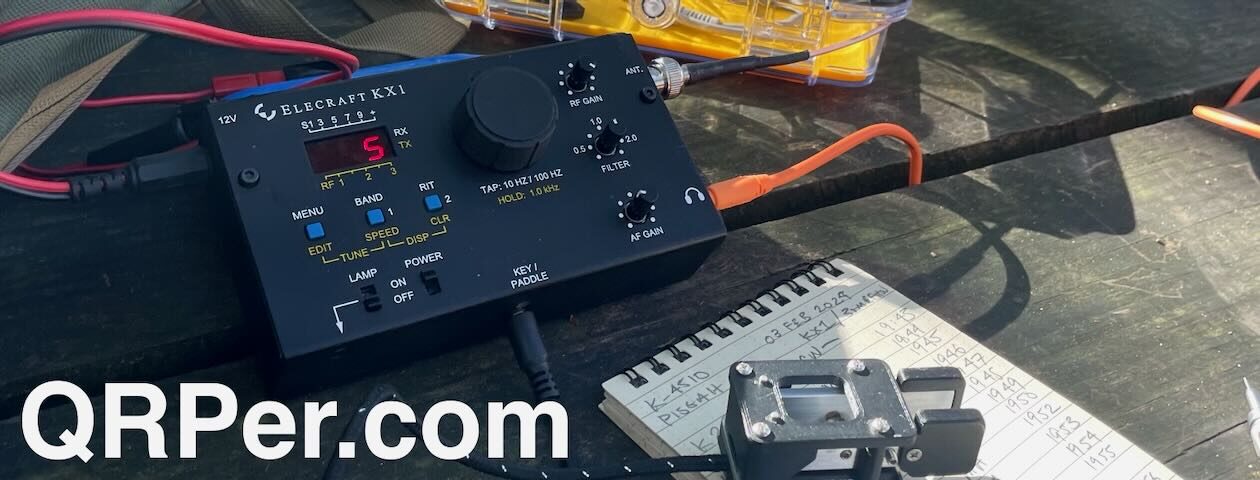Many thanks to Bob (K4RLC) who shares the following POTA field report from February 2023:
Dismal Swamp Activation – February 2023
by Bob (K4RLC)
 The Dismal Swamp is a lovely place !
The Dismal Swamp is a lovely place !
The goal for this winter was to activate the Dismal Swamp in northeastern North Carolina, both as it is a relatively rare area, and during the summer it is full of critters like snakes, gators, bears, and mosquitoes as big as birds. So, in February I did a three day trip.
First, I activated the Dismal Swamp State Park (K-2727) in Camden County North Carolina, off US Highway 17.
This state park contains some historically important lands to the US. In pre-revolutionary times, George Washington actually bought some of the swamp land and attempted to drain it to make it farmland. His plan failed, but there is still a marker for his house on the Virginia side. Indigenous people lived here 13,000 years ago, and flourished off the rich fish and animal life.
During the Civil War, the Dismal Swamp was an important part of the Underground Railroad, for those escaping from slavery in the South to freedom in the North. Some slaves used ancient Indian villages as the foundation for building communities deep in the swamp. There are still remnants of this rich history. Originally, the Great Dismal was over a million acres, but now is only half that size.
To make this activation more interesting, you first must go to the Gate Keeper and sign in with your name and give the model and color of your car before you can enter the park. This is to keep track of lost souls who might wander off the path in the swamp, never to be found.
The Gate Keeper also controls the bridge over the Dismal Swamp Canal, which is part of the Intercoastal Waterway up the East Coast of the United States, sometimes called a water way Interstate. This canal was also historically important for transporting materials in the 1800s.
During World War II, when German U-Boats torpedoed merchant ships off the coast of North Carolina, the Dismal Swamp Canal became an important waterway for military transport. Once you enter Dismal Swamp State Park, there are several hiking trails along the Canal and back into the Swamp. One even takes you by a Moonshine Still which unfortunately was not still operating.
 I set up the trusty ICOM-706 MkIIG at a picnic table on 20 meters CW, and soon had a nice pile up going. Someone spotted me on the POTA site and RBN. Soon, I was getting emails to my cell phone asking for contacts. Little did I know how rare Camden County was, especially on the 40 and 20 CW bands.
I set up the trusty ICOM-706 MkIIG at a picnic table on 20 meters CW, and soon had a nice pile up going. Someone spotted me on the POTA site and RBN. Soon, I was getting emails to my cell phone asking for contacts. Little did I know how rare Camden County was, especially on the 40 and 20 CW bands.
 I wish I had had more time to explore Dismal Swamp State Park, including walking the 20 mile path along the Canal, but I wanted to go to the Dismal Swamp National Wildlife Refuge (K-0566) which was over an hour’s drive away, with the entrance across the border in Virginia.
I wish I had had more time to explore Dismal Swamp State Park, including walking the 20 mile path along the Canal, but I wanted to go to the Dismal Swamp National Wildlife Refuge (K-0566) which was over an hour’s drive away, with the entrance across the border in Virginia.
On the way, I got an email from a ham in Hungary who needed a nearby county on 20 meters CW – Pasquotank County. Since it was only a bit out-of-the-way, I thought the least I could do was to drive there and help an overseas fellow ham. Continue reading Bob’s three day POTA camping trip in and around the Dismal Swamp!






























































